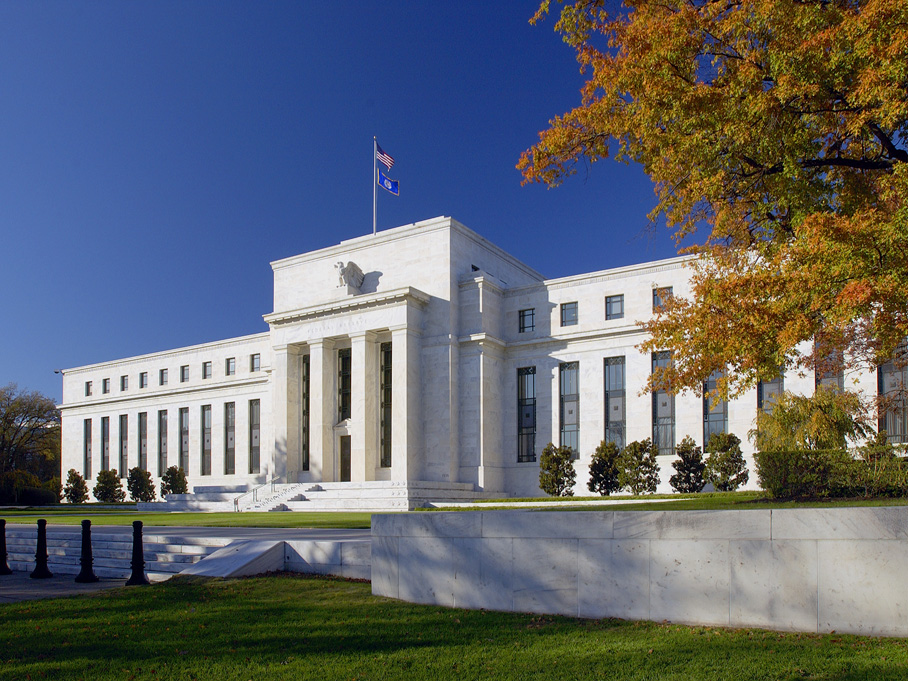“Portfolio builders – not to mention our economies, central bankers and politicians – have become accustomed to an era of cheap energy, food, goods and labour, but that cosy environment came under duress in 2022 and as a result volatility picked up and the going got a lot tougher for investors, especially if they followed a classic 60% equity, 40% bond asset allocation,” says AJ Bell investment director Russ Mould.
“India, Brazil and the UK were the best three performing stock markets in 2022, in local currency terms, and the USA one of the worst and while it was tough sledding for equity investors it was an awful lot tougher for bondholders and cryptocurrency traders. Meanwhile, natural gas shot higher, but oil (and gold) did nothing, and food price increases began to ease, with the result that financial markets are ending the year buoyed by hopes inflation is peaking and interest rates are poised to fall in 2023.
“Whether 2022 is an aberration, and an outlier in that long-term picture of cheap energy, food, goods and labour, or the end of the era that began in the early 1980s remains to be seen, and the answer could well shape portfolio performance for some time to come, so it worth thinking about what happened this year and why.”
- Oil, gas and inflation
“Russia’s invasion of Ukraine in February gets a lot of the blame for the spike in inflation suffered in the West in 2022, and natural gas prices are up by more than 80% this year, using the American Henry Hub benchmark, and the Dutch TTF natural gas futures price in Europe in euros per megawatt hour is up by more than 100%. Oil, however, is almost unchanged based on Brent crude, and at $80 a barrel it is trading a third below its spring peaks near $125 and the European gas price is trading miles below its panic-driven peaks.

“Oil is down because of America’s release of a big chunk of its Strategic Petroleum Reserve, OPEC+’s affirmation at its December meeting that it wants a balanced market and also fears of a global recession in 2023, while the EU gas price is down thanks to increased Liquified Natural Gas shipments, higher storage levels and a mild start to winter. Yet China’s reopening post-COVID, America’s ultimate need to replenish its SPR, ongoing sanctions against Russia and relatively limited levels of investment in exploration and production by oil majors could yet put a floor under the price of black gold.
“While energy prices are not the sole reason for inflation reaching its highest mark in four decades on both sides of the Atlantic, they have a big role to play, as they filter through to so many other parts of the economy, from fuel to packaging to fertilisers and the cost of producing and shipping food and other goods. Weakness in oil and gas prices in 2023 could give consumers, corporations and central bankers a break, while a repeat of the multiple oil shocks of the 1970s could yet put them back on their heels and present stock and bond markets with a fresh challenge to consider.”
- Interest rates finally move higher
“Other factors to consider among the causes of inflation are the boost to demand from more than a decade of ultra-loose monetary policy and Governments’ fiscal incontinence, which are finally meeting with fractured supply chains, while policy-makers are clearly concerned that tight labour markets could lead to rapid wage growth and an inflationary spiral to match that of the 1970s.
“The direction of travel in terms of monetary policy in 2022 was pretty clear, as central banks pushed through nearly 350 interest rate increases between them and sanctioned fewer than 20 cuts (and those reductions came mainly from Russia, China and Turkey, countries with particular economic challenges or political and economic agendas of their own). In addition, Quantitative Easing (QE) became Quantitative Tightening (QT), as a further means of tightening policy, although Japan remains a key outlier on rates and QE.”

“Markets are now hoping that a perceived peak in inflation and a late-2022 slowdown in the degree of interest rate increases in the USA, Australia, Canada and EU will lead to a monetary policy pause and then pivot in 2023, when the first rate cuts are currently being priced in by bond markets for the fourth quarter – just in time for Christmas, in fact.”
- All hail, King Dollar
“Those interest rate increases had many effects so far as financial markets were concerned. Government and corporate bond yields were dragged higher and bond prices thus fell, and share prices wobbled in the face of those higher bond yields and the higher discount rates they implied. Those higher discount rates led to some multiple compression for equities and also stoked fears that an economic slowdown or recession would lead to downgrades to corporate profit forecasts in a painful double-whammy of a de-rating – a lower ‘P’ in the price/earnings ratio – and concerns over a drop in earnings, the ‘E’ in the PE.
“One asset that got a boost from the US Federal Reserve’s gallop to raise interest rates and combat inflation was the US dollar. As America’s central bank jacked up the Fed Funds rate from 0.25% in January to 4.50% by December, the buck initially surged. The trade-weighted DXY (or ‘Dixie’) index flew to its highest mark since 2002 and at the same time began to exert its gravitational pull on both commodity prices and emerging market equities.

“Raw material prices tend to trade inversely to the dollar because, with the exception of cocoa, they are priced in the US currency. If the dollar rises, this makes them more expensive for nations whose currency is not the greenback or pegged to it and can therefore lead to demand destruction.
“Emerging equity markets tend to trade inversely to the buck because a lot of them have dollar-denominated debt. As the dollar rises, servicing this debt becomes more expensive in local currency terms and those interest rate payments suck away cash that could be used for productive, domestic investment.
“Commodity traders and holders of EM stocks will have been pleased to see the dollar lose around 10% of its value in the final quarter of 2022, as markets priced in a monetary policy pause and pivot from the US Federal Reserve in 2023.”
- Cryptocurrency crumble
“As central banks raised interest rates and started to sterilise QE, they withdrew a portion of the cheap liquidity that had done so much to boost risk appetite and elevate asset prices across the board, especially in 2020 and 2021. That forced a reappraisal of risk appetite, especially as cash and bonds began to offer improved returns, at least in nominal, pre-inflation terms, and some of the more esoteric areas of the markets came under the cosh as a result. Junk, or high-yield, bonds took a pasting in fixed income; emerging markets, initial public offerings, SPACs and meme stocks fell to earth in equities; and cryptocurrencies crumbled.
“This is a fairly classic financial market cycle, as risk appetite means peripheral assets feel the pain first, and core markets later (and at the end of any wider market downdraft). To describe it in a different way, markets come for the lieutenants first and the generals later.
“Cryptos were not helped by a series of setbacks and scandals, including the fall of Luna, the Three Arrows hedge fund’s failure, the bankruptcy of broker Voyager, the demise of lender Celsius and then the collapse of FTX and Alameda and arrest of their founder and cryptocurrency luminary Sam Bankman-Fried. The ripples could linger, as other crypto platforms are suffering outflows or pausing client withdrawals, while questions over the health of Tether refuse to go away and the US-traded Grayscale Bitcoin Trust (GBTC) trades at a huge discount to its reported net asset value.

“Bitcoin has lost around two-thirds of its value in 2022 and retreated to levels last seen in 2020, as its status as money, a haven or tradeable asset lost lustre. It will be interesting to see if the cryptocurrency shines again if, and or when, the Fed and central banks return to cutting interest rates (or even QE) in the event of a downturn or recession.
“Meanwhile, that other perceived haven during times of policy panic, gold, outperformed Bitcoin handily in 2022, by virtue of doing very little. It is even ending the year with another attempt to break back above $1,800 an ounce, a move which heralded a surge to over $2,000 in both 2020 and 2021.”
- Technology travails
“Another former darling to fall from grace in 2022 was the technology sector, especially if the companies in question were loss-making, jam-tomorrow stocks (which meant that biotechs and some of the most speculative areas of the SPAC deals frenzy such as space-related firms and purported online disruptors were among the heaviest losers). Even the MAANAM stocks (FAANGM as they once were) proved unable to avoid the shake-out as sales and profits growth disappointed and, in one or two cases, cash flow stopped flowing, thanks to weaker ad revenues, galloping cost growth, tighter regulation and the squeeze on consumers’ pockets from inflation.
“As things stand, the NASDAQ is down by a third from its late-2021 all-time high and the Meta, Amazon, Apple, Netflix, Alphabet and Microsoft hydra has shed $4 trillion in aggregate market cap between them since their individual peaks (although their combined price tag is still a beefy $6.8 trillion).
“For want of a better turn of phrase, ‘growth’ had outperformed ‘value’ for the thick end of a decade, thanks to the prevailing, low-growth, low-interest-rate, low-inflation environment. But a change to higher inflation and higher rates has prompted a reappraisal, and if inflation or stagflation are here to stay, and rates stay higher for longer, than tech could remain out in the cold.

“If that environment persists, firms which are seen as capable of providing secular trends then growth will again be highly prized. If it changes, and inflation takes over, then there would be no reason to pay high multiples for secular growth when cyclical growth (or ‘value’) would be available at much lower valuations.
“Sticky inflation could also lead to higher-for-longer interest rates, which would again work against growth stocks. This is because it would mean higher discount rates for those highly prized, long-term cashflows and higher discount rates mean lower valuations for those jam-tomorrow earnings, and lower valuation mean lower share prices. Equally, a return to a low-inflation world could help interest rates and discount rates go down and tech equity valuation go up once more.”







